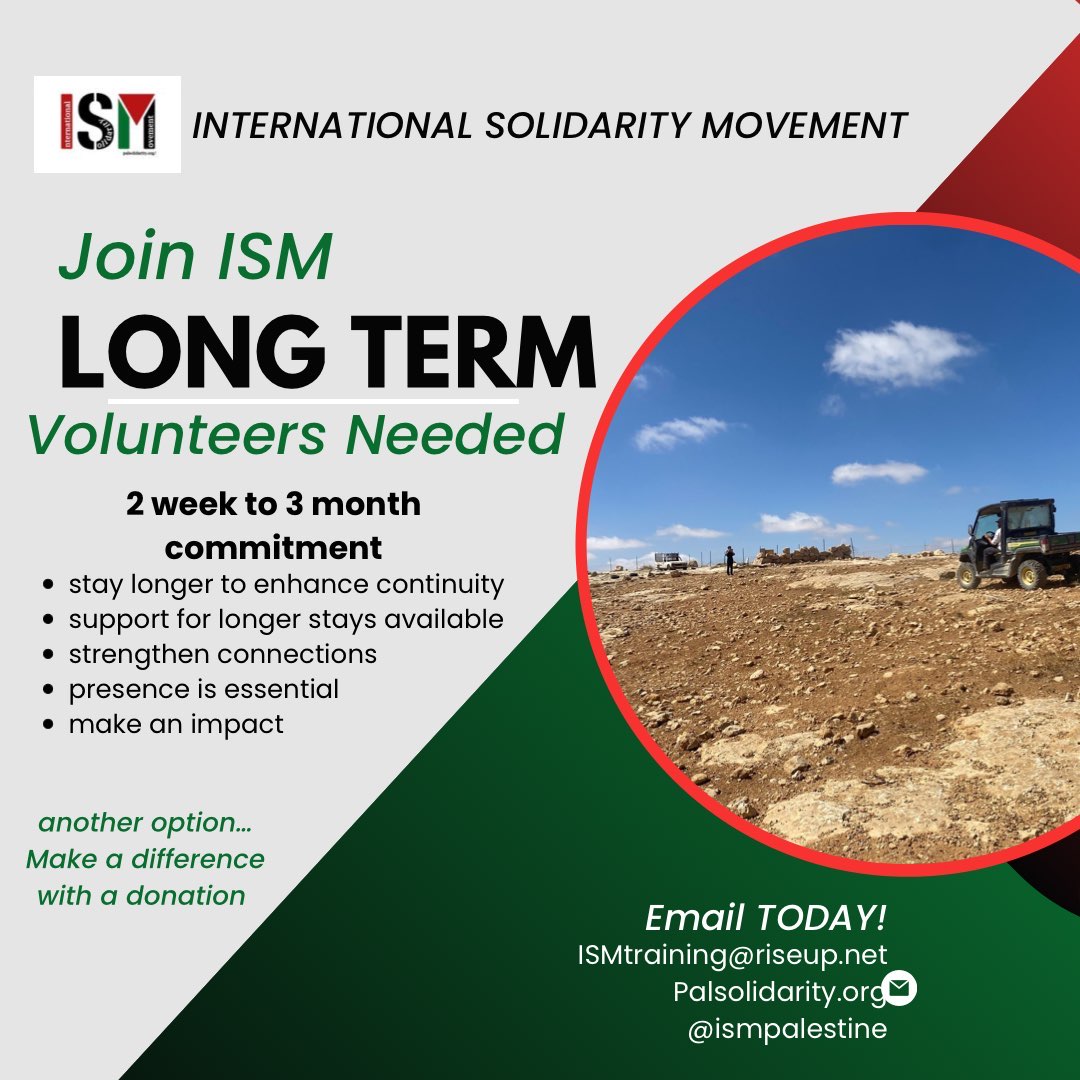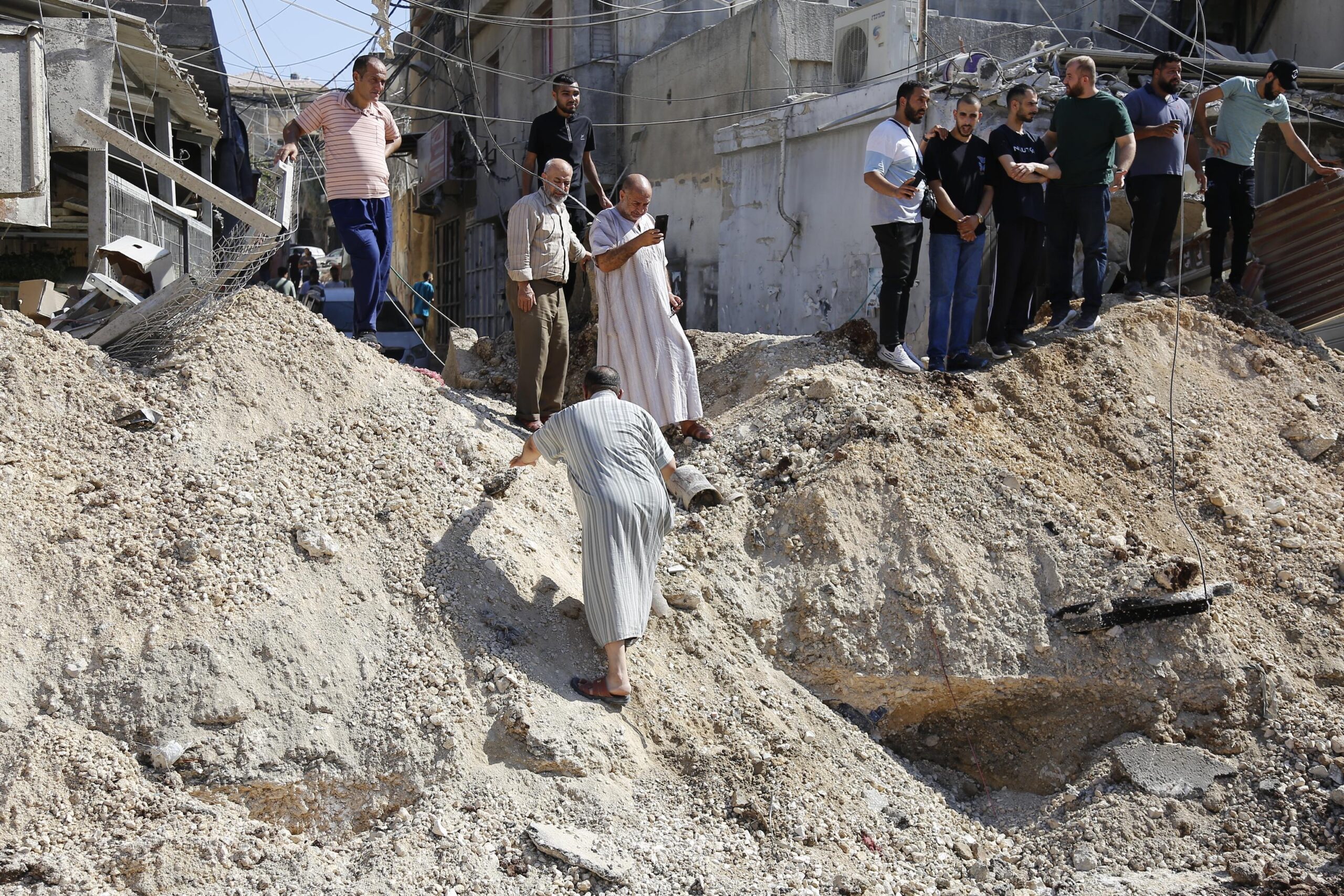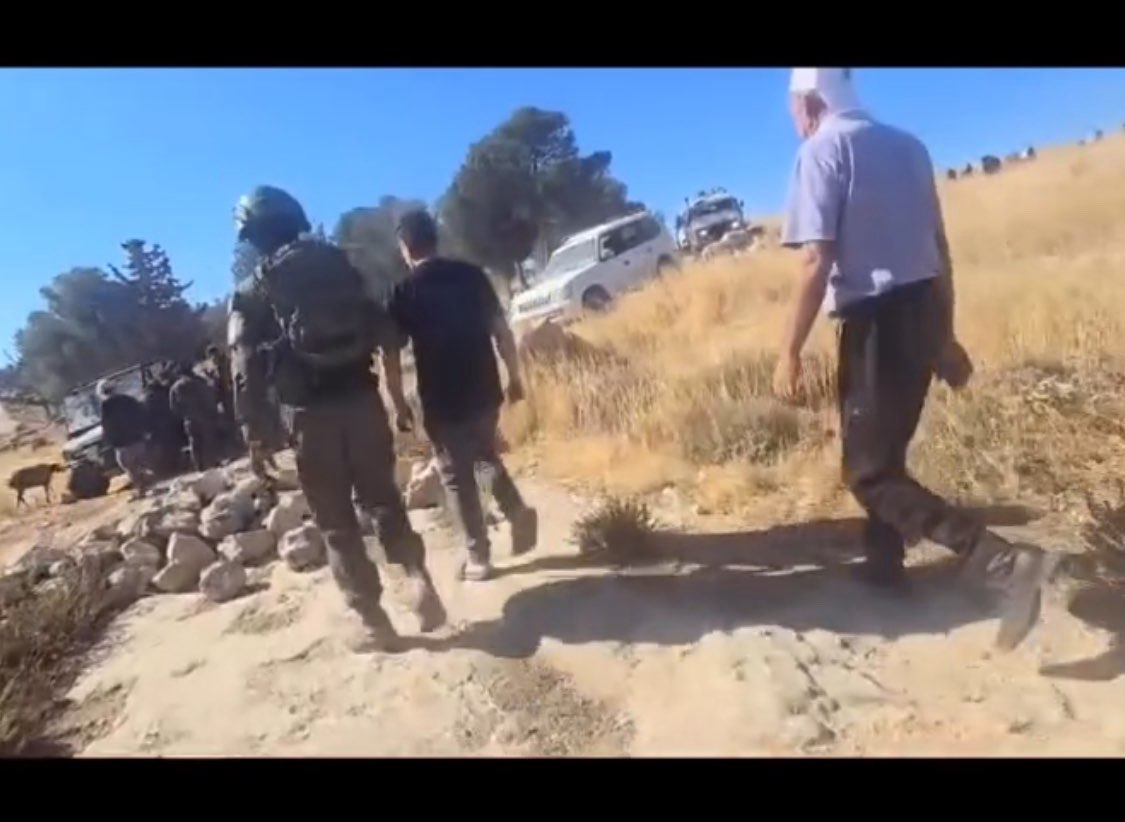Author: ISM Media
-
Join the International Solidarity Movement in Palestine: Long-Term Volunteers Needed!
The International Solidarity Movement (ISM) in Palestine is seeking dedicated long-term volunteers to join our efforts in standing in solidarity with the Palestinian people. ISM is a Palestinian led movement founded in 2001 committed to resisting the long-entrenched and systematic oppression and dispossession of the Palestinian population, using non-violent, direct-action methods and principles **Minimum Commitment:**…
-
Huge Destruction Suffered by Nur Shams Refugee Camp
*Tulkarm – Nur Shams Refugee Camp* June 9, 2024 By Diana Khwaelid* At midnight on June 9, occupation forces stormed the city of Tulkarm and stationed themselves in the Nur Shams camp, northeast of Tulkarm. A military operation that lasted for more than 13 continuous hours ensued, during which the Israeli occupation forces vandalized and…
-
Palestinians and international human rights observers arrested in Masafer Yatta, occupied West Bank
July 7, 2024 FOR IMMEDIATE RELEASE Israeli Occupation forces arrested three Palestinians, including a 14 year old child, together with three international (including a US citizen) and one Israeli human rights observers in at-Tuwani, Masafer Yatta, in the South Hebron Hills area. This morning, armed Israeli settler shepherds invaded Palestinian land with their flocks, provoked…



